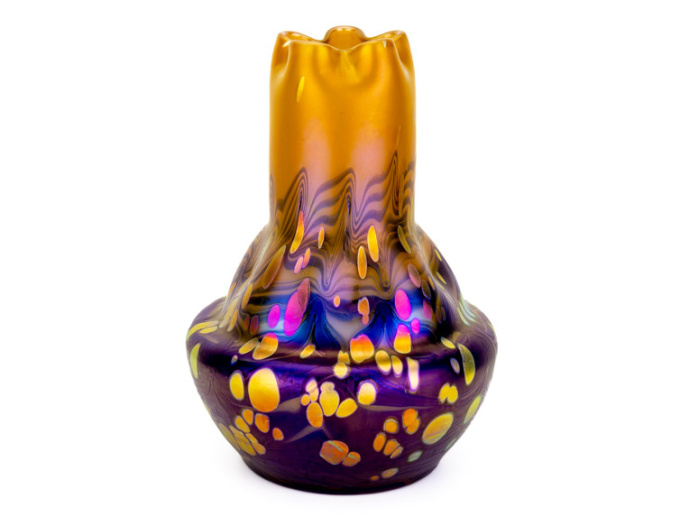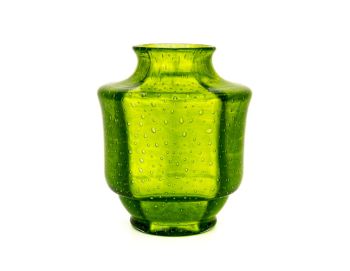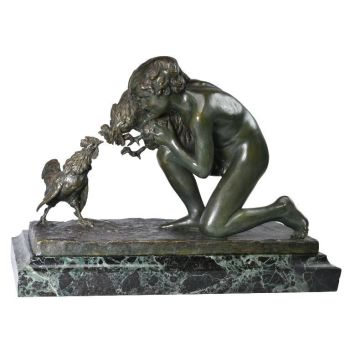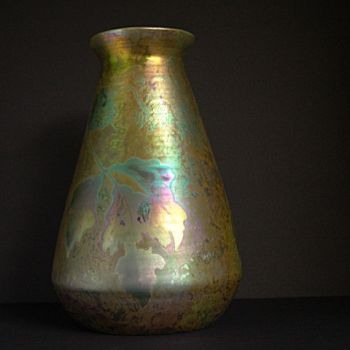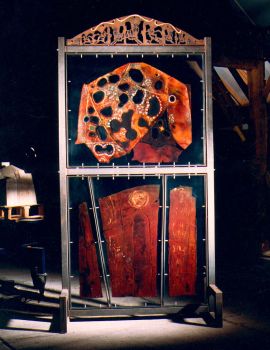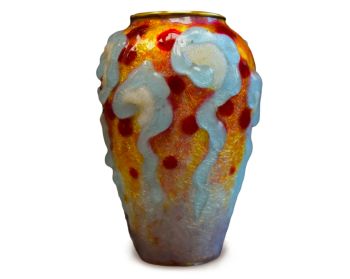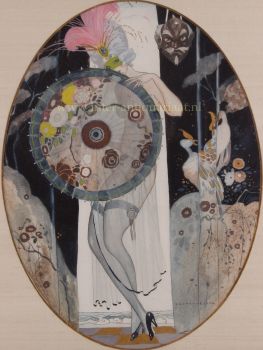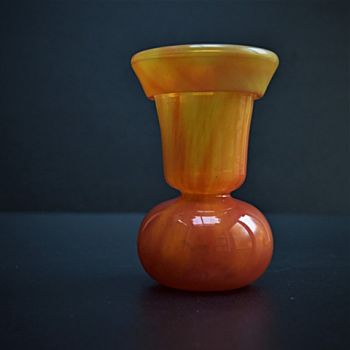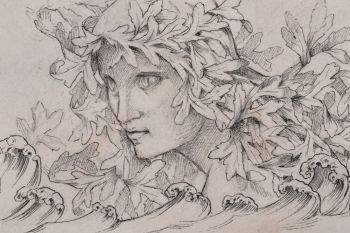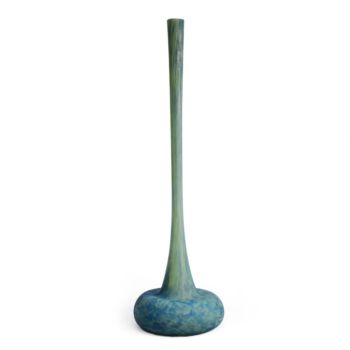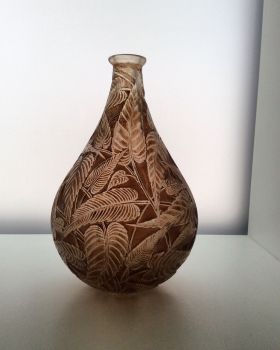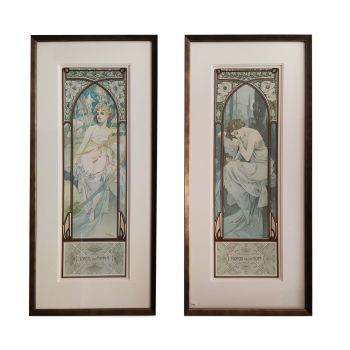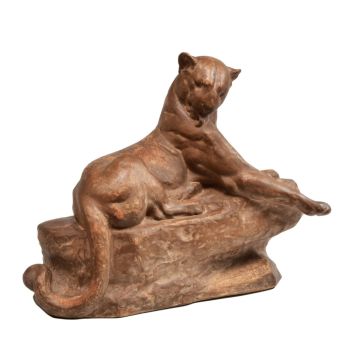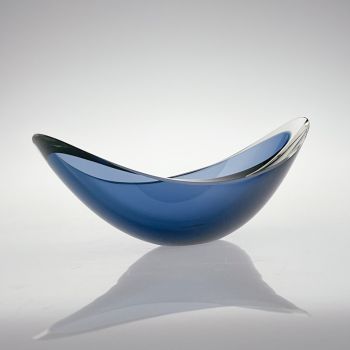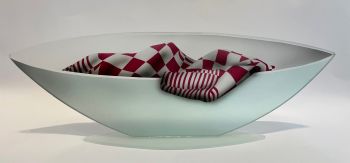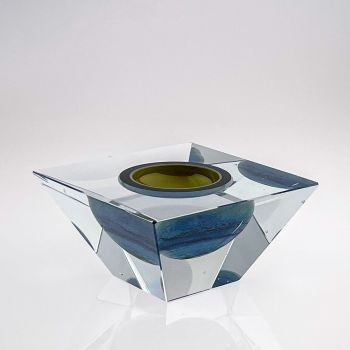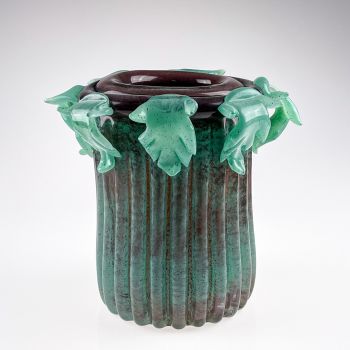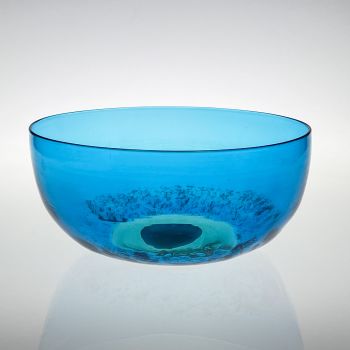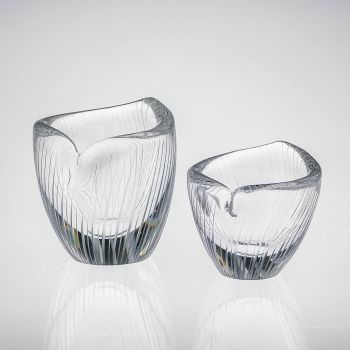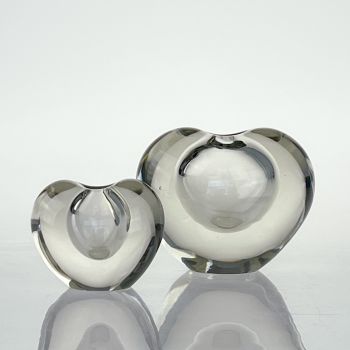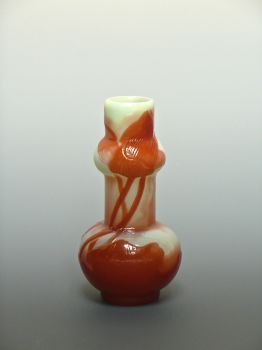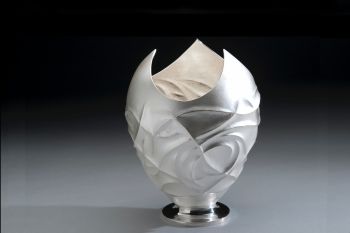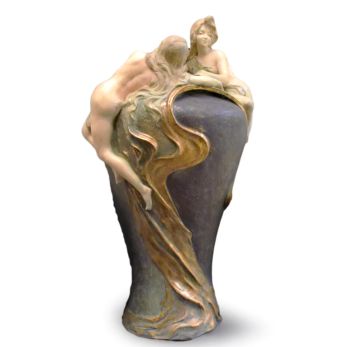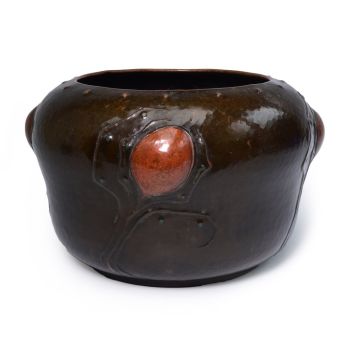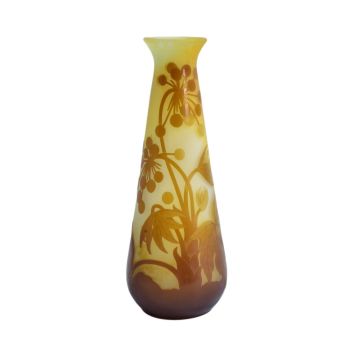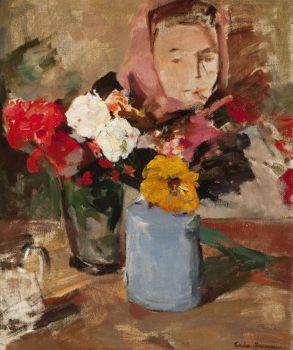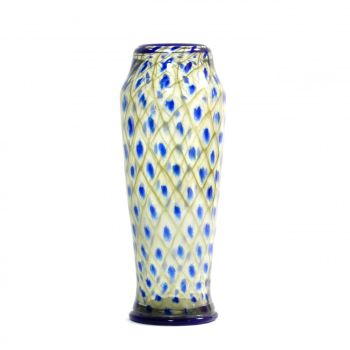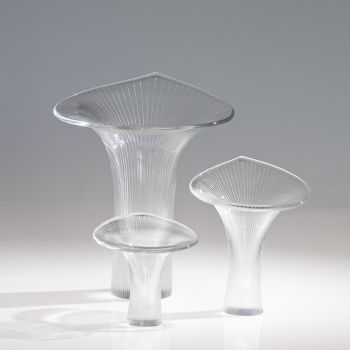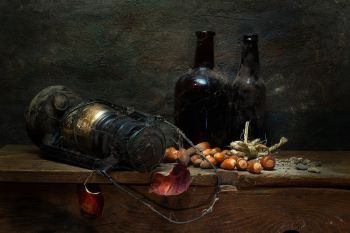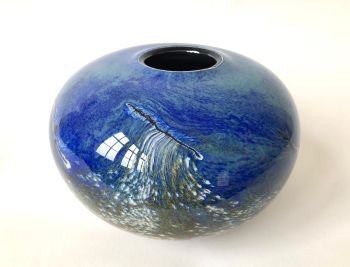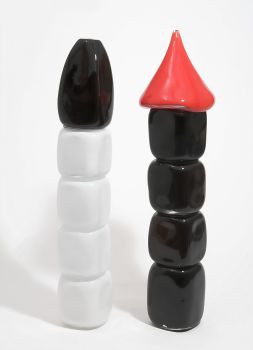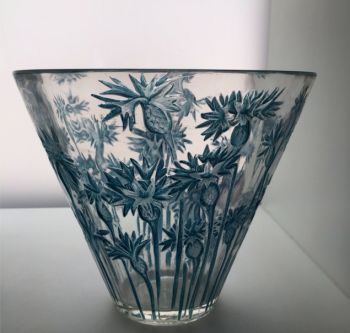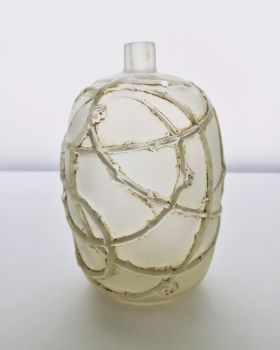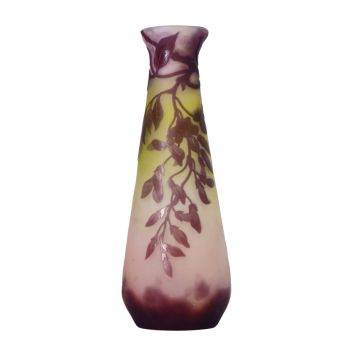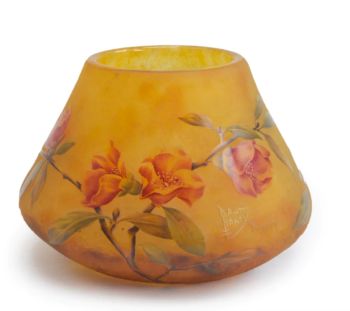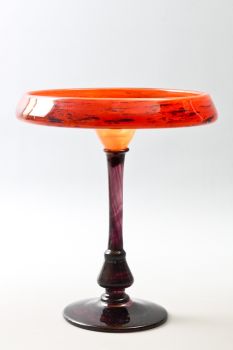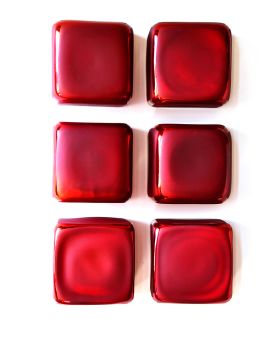Johann Loetz Witwe – Jugendstil vase in Cytisus Neurot decor 1900 - 1910
Johann Loetz (Lötz) Witwe Klostermühle
Vidrio
21 ⨯ 16 cm
ConditionMint
Actualmente no disponible a través de Gallerease
- Sobre la obra de arteThe complex organic shape of this vase produced by the Johann Loetz Witwe company is characteristic of the designs just after the great success at the World Exhibition in Paris in 1900. The Loetz decor Cytisus is very refined and artistic and shows how exceptional the quality of the productions of Johann Loetz Witwe in this period were.
This Cytisus vase is executed in ground color “Neurot” and has randomly drawn in a wave pattern blue threads of glass with iridescent dots. The complex organic shape and the indentations on the body show that this object was very artfully free-formed by the glassblower. - Sobre el artista
La cristalería Loetz existió en Klostermuhle, Austria, durante poco más de cien años, a partir de 1840. Pero su apogeo fue durante la vida de Max Ritter Von Spaun, nieto del Johann Loetz original que había fundado la empresa.
Von Spaun se hizo cargo de la empresa en 1879 y la dirigió hasta 1908, un año antes de su muerte. Fue asistido por Eduard Prochaska, su especialista técnico, y juntos inventaron, diseñaron y produjeron toda una serie de maravillosos nuevos tipos de vidrio, obteniendo varias patentes y ganando premios en todas las principales exposiciones mundiales durante la década de 1890 y los primeros años de el nuevo siglo.
La empresa Loetz se encontraba entre los líderes en diseño Art Nouveau y especialmente en vidrio artístico iridiscente. El vidrio "Papillon", como el jarrón de la izquierda, a veces se conoce hoy como vidrio "mancha de aceite". Otro colorante favorito de Loetz fue el vidrio irridizado con senderos tirados llamado vidrio "Fenómeno".
Había jarrones irridizados con cintas de colores metálicos que serpenteaban sobre la superficie, y muchos diseños espectaculares con estelas aplicadas de hermosos colores, o simplemente sacadas del cuerpo del vidrio para formar asas o decoración.
Alrededor de 1900, la compañía comenzó a colaborar con diseñadores externos, y algunos grandes artistas diseñaron piezas para Lotz, en particular Joseph Hofmann, Koloman Moser, Maria Kirchner y Hofstatter.
En 1908 Loetz fue adquirido por el hijo de Max Von Spaun, también llamado Max, y aunque luchó financieramente (pasando por la quiebra en 1911 y nuevamente en 1931) hubo varios grandes diseñadores cuyo trabajo fue producido por Loetz durante esos años y a través del arte. período de deco. Estos incluyeron a Adolf Beckert y Michael Powolny.
Artwork details
Related artworks
Johann Loetz (Lötz) Witwe Klostermühle
Johann Loetz Witwe – Jugendstil Cobalt Papillon vaas1900 - 1910
Precio a consultarAntiques Emporium
Johann Loetz (Lötz) Witwe Klostermühle
Johann Loetz Witwe - Phänomen Genre 7773 – Orange1900 - 1910
Precio a consultarAntiques Emporium
1 - 4 / 8- 1 - 4 / 24
Gabriel Argy-Rousseau
Gabriël Argy-Rousseau – Crabes et Algues vase – 19201920 - 1929
Precio a consultarAntiques Emporium
Frères Daum
Daum Nancy – “Paysage Soleil Couchant” vase with two applied handles1900 - 1910
Precio a consultarAntiques Emporium
1 - 4 / 24Johann Loetz (Lötz) Witwe Klostermühle
Johann Loetz Witwe - Phänomen Genre 7773 – Orange1900 - 1910
Precio a consultarAntiques Emporium
1 - 4 / 24René Lalique
Un jarrón temprano 'Bluets' diseñado por Rene Lalique (1860-1945)1910 - 1920
Precio a consultarLennart Booij Fine Art and Rare Items
Johann Loetz (Lötz) Witwe Klostermühle
Johann Loetz Witwe - Phänomen Genre 7773 – Orange1900 - 1910
Precio a consultarAntiques Emporium
1 - 4 / 24

